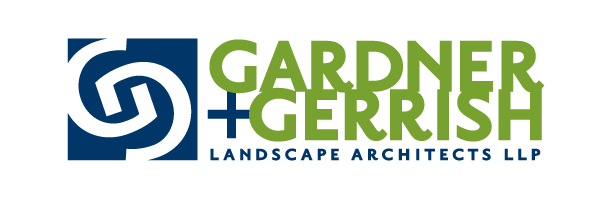All projects are fundamentally different in scope, goals and budget. Our process for new construction often involves the following phases.
1. Inventory and Analysis Phase
The preliminary consultation begins with a site walk and client meeting. We address several goals during this phase. Primarily this includes development of a prioritized client “wish list” and obtaining a thorough understanding of the site’s unique opportunities and constraints. We offer our suggestions for what a site master plan might include through a written report and an initial proposal for design services.
2. Existing Conditions Plan Phase
Incorporating existing base plan information, a site survey and our own investigation, we develop a plan of existing conditions drawn to scale from which all further planning is based. We strongly recommend obtaining a site survey produced by a licensed surveyor for clients who do not already have a plan of their property. A site survey records all existing conditions to scale including property boundaries, utilities, easements, large vegetation and structures.
3. Concept Plan Phase
Upon completion of the existing conditions plan, we work with the client to present and discuss design concepts, and we return to the site for further study. We welcome active client involvement. For example, we guide clients through an exploration of possible spatial arrangement, materials, and color palettes. Project goals are interwoven with the site’s opportunities and constraints including grading, drainage and zoning requirements.
Throughout this process, we generate a series of hand drawn schematics that illustrate our concepts. Several phases of refinements are developed based on client responses and feedback. Photographs and perspective sketches are often presented to clarify possible end results. During this process, we collaborate with all key players on the project, especially the client’s architect, builder and interior designer.
Each property has its own set of building and zoning criteria which varies from community to community. We check on local permit requirements and set backs to ensure that all designs are permissible.
4. The Master Plan Phase
Using the synergy of this intensely creative process and adding to it our experience, we develop a final master plan for the property. The master plan is a detailed and notated drawing that maps out all new design elements on the property and integrates them with existing features. A complete master plan is the culmination of an exciting collaborative effort. Each one also reflects our fundamental design philosophy and mission as landscape architects. Included during this phase is a preliminary construction estimate.
5. Construction Documents Phase (Design Development)
Integration of design and construction specialists is key in order to simultaneously interpret exact design intentions Therefore, upon the client’s approval of the master plan, we create an extensive set of construction drawings for construction purposes.. This includes numerous different sheets of drawings, created to scale, for contractors to follow and also to produce a final cost estimate. We look to budget constraints as an opportunity to be creative and to properly phase construction. These drawings follow a computer-aided design format to produce extremely detailed plans for easy collaborative and file sharing with other project consultants. Additional sophisticated software programs may be implemented for enhanced three dimensional understanding of the master plan.
6. Construction Observation Phase
Our experience in landscape architecture is extremely beneficial to clients. Occasionally there are unforeseen obstacles in the interpretation of the detailed drawings. To ensure everything follows the design intent, we recommend scheduling regular site visits during construction. Rather than supervising or directing construction; we observe how the plans are being followed and make suggestions as needed. We also encourage phone calls with question or comments at any time.
